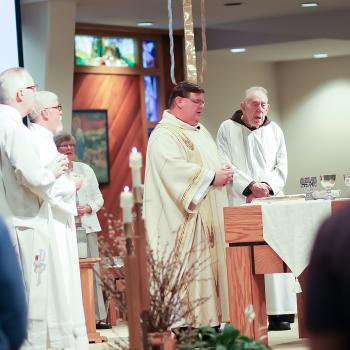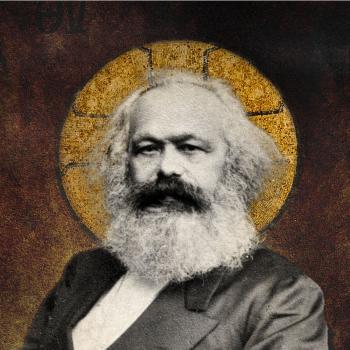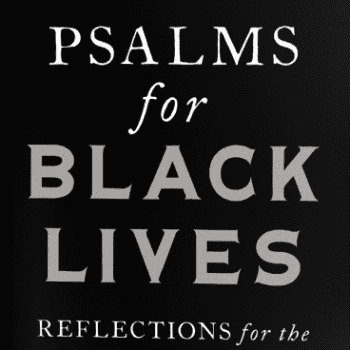In an article I wrote for Patheos a few months back, I talked about the ways in which films have depicted Protestants throughout history. In the brief space allotted, I barely scratched the surface of a rich, complex history. In his latest book, Christians in the Movies: A Century of Saints and Sinners, Peter E. Dans provides a much broader look at the representations of Christians in films over the last century. The result is almost encyclopedic in nature as he discusses hundreds of films, celebrating some true classics and uncovering hidden treasures along the way.
It’s surprising that Dans has written such a book, given his career as a medical doctor. He has written a book on the representation of doctors in film, but as a committed Catholic, he was disturbed by more recent negative portrayals of Christians and Christianity in film and set out to see what the history of this representation looked like. Dans divides his book by decades and, after his introduction, picks up in the 1920s. With each chapter, he provides a brief overview of the decade and its important events, inventions, and people. He then takes a brief look at the changes or broader themes in Hollywood at large at that time before looking more closely at how Christians were portrayed in films of that decade. The bulk of each chapter contain his reviews of films from each decade…there are hundreds in total. For each film he discusses, he spends equal time summarizing it and then offering his commentary on it from his religious perspective. Along the way, he also includes “behind-the-scenes” sections in which he discusses in more detail a particular director, film, or genre. Each chapter concludes with a quick discussion of several minor films from the decade, and the book concludes with a detailed, lengthy filmography and bibliography.
I don’t want to list Dans’ interpretation of each decade in full (you’ll have to read them for yourselves!), but to summarize his findings, he traces an arc of cinematic representations that shift gradually from the pious in the ’20s to the scandalous in the 2000s. Though Dans asserts that he doesn’t think we should go back to the days of censorship or that the Legion of Decency should be restored, there’s still a clear longing here for those “cleaner” pictures of days gone by. Though he exhibits a deep knowledge of film history and, by and large, insightful engagements of each film, I feel that his view is too narrow. Dans far too often equates an attack on institutionalized religion and its professionals as an attack on Christianity itself. Perhaps this should not be surprising given his Catholicism which is one of the most highly institutional forms of Christianity. He does not take his criticism of films’ criticisms of Christians a step further to speculate the ways in which those cinematic “attacks” might be interpreted as embodying something Christian/religious/spiritual as well.
Dans is highly critical of overt sex, violence, drug use, and profanity in contemporary films, and, to be sure, some of this is certainly called for. While, he praises the Golden Age’s more reserved, thoughtful style, he fails to realize that it, like its more recent, graphic counterpart, is a, potentially, equally damaging ideological view…neither the “separate beds” of the ’30s or the “sexual acrobatics” of the ’90s are realistic. Moreover, deeply troubling ideologies of gender, race, and sexuality under-gird many of the classics that viewers often uncritically love and praise. Like many Christian viewers, Dans of course had no problem with the violence in Gibson’s The Passion of the Christ, taking an “it is as it was” approach which fails to recognize the ways in which Gibson’s film was more faithful to the visions of a mystical nun than scripture itself.
Though these might seem like harsh criticisms of the book, given the wealth of material here, there is much to praise about Dans’ work as well. For the most part, his commentaries of the films are spot on, insightful, and humorous. As a whole, Christians in the Movies is a valuable resource and a much-needed one. This will be a perfect text for classroom and congregational use. Entire courses, lectures, and discussion series are just waiting to be created from the material that he has provided here.












